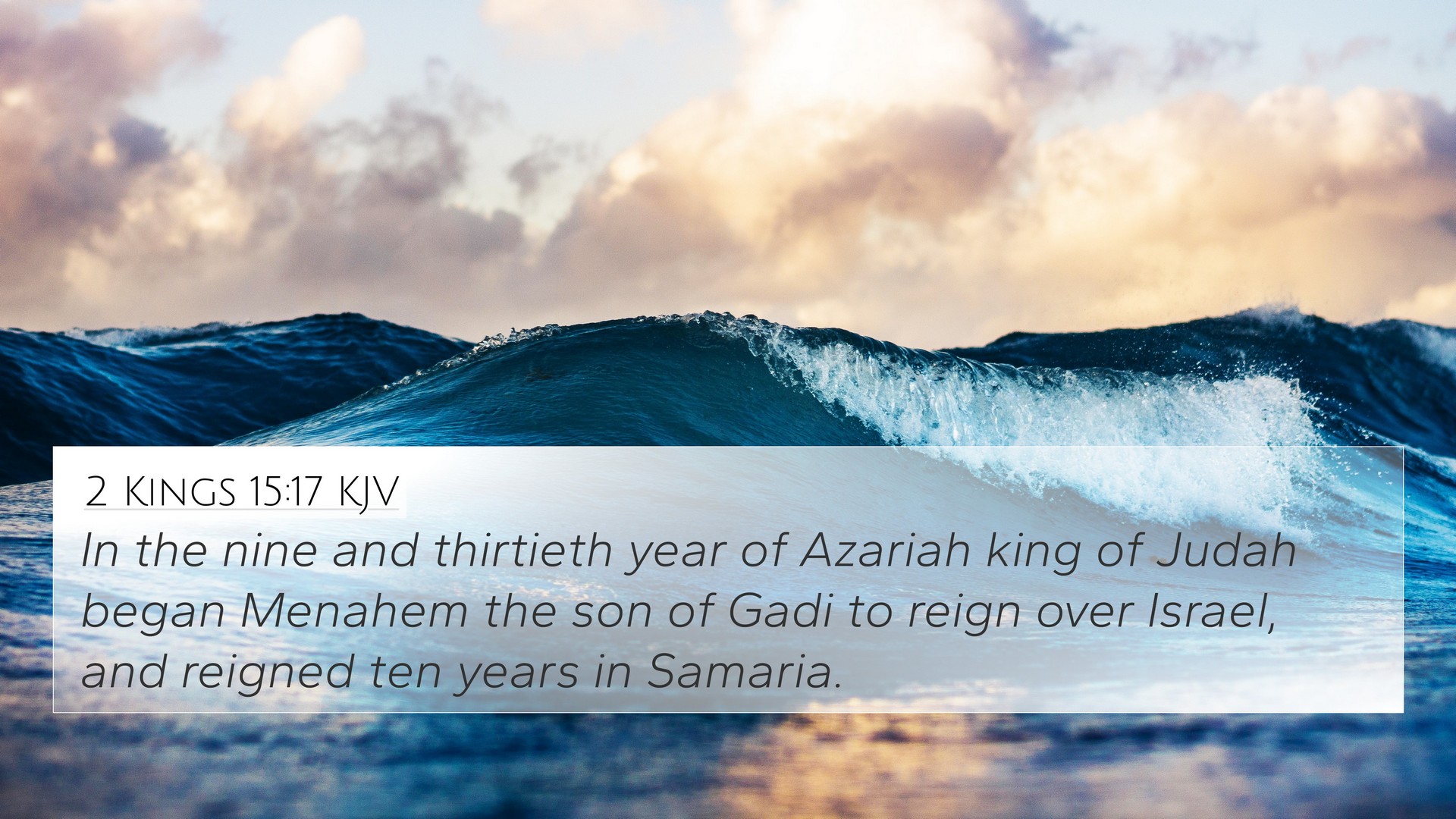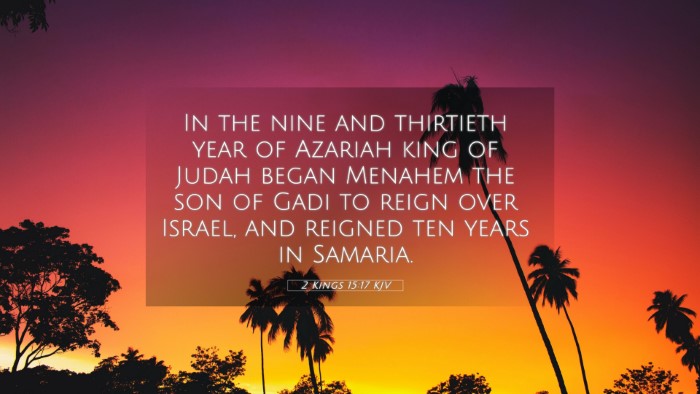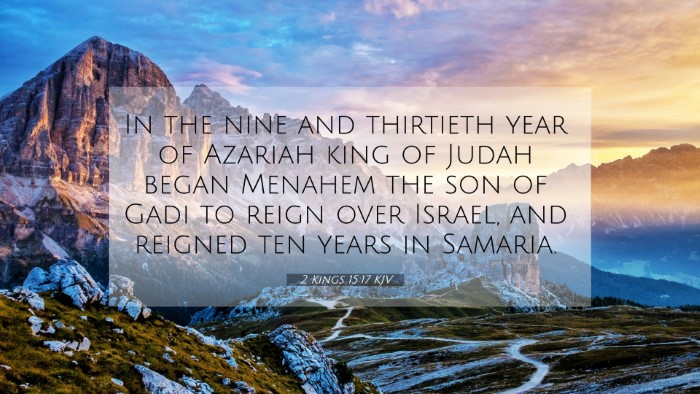Understanding 2 Kings 15:17
Bible Verse: 2 Kings 15:17 states, "In the thirty-ninth year of Azariah king of Judah, Menachem the son of Gadi became king over Israel, and reigned ten years in Samaria." This verse marks a significant transition in the history of the kings of Israel, highlighting the reign of Menachem amid political instability.
Overview of 2 Kings 15:17
This verse serves as a critical point in the narrative of the kings of Israel, indicating the shifting power dynamics and the challenges faced during the reigns of various monarchs. The mention of precise years and locations reflects the historical context, tying the events to specific timelines that can be cross-referenced with other Biblical accounts.
Historical Context
Menachem's reign is particularly noteworthy as it occurs during a time of turbulence and moral decline in Israel. His ascendancy to the throne reflects the overarching theme of the cyclical nature of Israel's leadership, often characterized by corruption and idolatry.
Commentary Insights
- Matthew Henry: Notes that Menachem's reign was marked by his ruthlessness. He resorted to violence to secure his position, showcasing a lack of reliance on God and a preference for political machination.
- Albert Barnes: Emphasizes the timing of his rule, indicating that it was during a significant period of challenge for both Israel and Judah. The long-standing enmity and division between these two kingdoms are pertinent to understanding this verse's ramifications.
- Adam Clarke: Reflects on the socio-political landscape that allowed Menachem to rise, suggesting that his rule was an embodiment of the period's moral decay, which led Israel further from divine precepts.
Bible Verse Cross-References
The insights garnered from this verse can be complemented by exploring these interrelated Scriptures:
- 1 Kings 12:16-19: Discusses the division of the kingdoms, providing a backstory to the political environment Menachem operated within.
- 2 Kings 15:8: Offers context on the kings that preceded Menachem, illustrating the atmosphere of instability predicted based on their sinful actions.
- Micah 1:1: A prophetic reminder of the judgments to come on Samaria, pertinent to understanding the spiritual state of Menachem's rule.
- 2 Kings 14:23-29: Provides a comparative analysis of the reigns, especially relating to national idolatry during this period.
- Isaiah 7:16: Provides insights on the prophetic messages relevant to the time period that influenced national politics in Israel.
- Hosea 5:1-5: vonveys themes of judgment and the leadership failures that are evident in Menachem’s rule.
- 1 Chronicles 5:26: References the context of Israel's political alliances, which can contextualize Menachem's own alliances.
Thematic Bible Verse Connections
The connections between this verse and others indicate the recurring themes found throughout Scripture concerning leadership, idolatry, and divine judgment:
- Leadership and Accountability: Men's leadership through sinful acts (e.g., 1 Samuel 15:23) creates a narrative of accountability before God.
- The Nature of Idolatry: The repercussions of turning away from God (e.g., Deuteronomy 8:19) become evident in the events surrounding Menachem's rule.
- Prophetic Warnings: Consistent calls for repentance from prophets (e.g., Jeremiah 25:4) highlight God's ongoing concern for the moral trajectory of Israel despite its kings.
Tools for Bible Cross-Referencing
To delve deeper into these themes and connections, several tools can enhance your study:
- Bible Concordance: A comprehensive tool for locating specific words and phrases across verses.
- Bible Cross-Reference Guide: Organizes connections and themes across both Old and New Testament Scriptures.
- Cross-Reference Bible Study Methods: Structured approaches to engaging with Scripture that highlight thematic links.
Conclusion
2 Kings 15:17 serves as a critical juncture in understanding the broader narrative of Israel's history, capturing themes of leadership, societal decay, and prophetic warnings. Applying the principles of cross-referencing and thematic analysis can yield deeper insights into not only this verse but also its place within the whole of Scripture.


